DAY 1, Monday , March 19:
"Ahlan wa Sahlan!"
Arrive at Alia International Airport, Amman
"Ahlan wa Sahlan!"
Arrive at Alia International Airport, Amman

It’s strange
that one of the places that seems most like home to our
family is Amman, Jordan and when driving into the country after a
time away, we breathed easier, felt more comfortable and eased a
sigh of “home”. Why we would feel such a fondness for this dry,
dusty city situated on 7 jebels (hills) in the northwest area of Jordan
family is Amman, Jordan and when driving into the country after a
time away, we breathed easier, felt more comfortable and eased a
sigh of “home”. Why we would feel such a fondness for this dry,
dusty city situated on 7 jebels (hills) in the northwest area of Jordan
is most probably due to the fact that we lived there for 7 years
during
3 different tours, raised our children there, taught school,
ambled about its paths and roadways
and watched it grow from a
small, straggling city spread over open fields, with herds of sheep
and donkeys munching in the open areas next to our houses, to a
large, modern city experiencing dynamic
growth and change to the
point that we will probably have trouble recognizing
it. The
Jordanian and Palestinian people
we knew were gracious and friendly
and made us feel comfortable there and our
lives as expats were
interesting, easy and pleasant. Amman is considered to be one of the
oldest continuously inhabited cities in the world and has passed
through the reins of
a notable list of “Who’s Who” in Middle East
history including the Assyrians,
Persians, Nabateans, Romans
(at which time it was one of the cities of the
Decapolis – a group of
10 important cities in the eastern reaches of the
empire), Egyptians
(who named it Philadelphia), the Ottomans, etc. The current name is
derived from the
Ammonites who called it theirs during the Biblical
period when it was known as
Rabbat Ammon. In 1921, King
Abdullah I –
the current king Abdullah’s great-grandfather selected
it as the capital city
of the newly delineated country of Trans-Jordan.
With the influx of refugees from Palestine, Iraq and Syria, the city
has grown and flourished and is now considered an
important
financial and tourist center in the region.
Dinner: Fahkredin's Restaurant
Overnight: Amman Marriott Hotel
( http://www.marriott.com/hotels/hotel-photos/ammjr-amman-marriott-hotel/)
The biggest treat for our children was staying at the Marriott
Hotel in Amman when we first arrived in country! The staff
made a fuss over them, the hamburgers tasted like a ham-
burger should and they had a delicious strawberry cake in
the bakery! Truth be known, we enjoyed the Marriott as
much as they did!
DAY #2 - Tuesday, March 20:
DAY #2 - Tuesday, March 20:
The King's Highway - The Road the Israelites took to the Promised Land
AM: Madaba, Heshbon, Mt. Nebo. Wadi Mujib
AM: Madaba, Heshbon, Mt. Nebo. Wadi Mujib
MADABA: Madaba is an early Christian settlement on the
eastern side of the Jordan River, known as the city of Mosaics,
the most important being a mosaic map of Jerusalem dating
from the 6th century, one of the oldest in existence.
from the 6th century, one of the oldest in existence.

HESHBON: You
remember the scriptural reference, right?
"For
Heshbon was the city of Sihon, king of the Amorites, who
had
fought against the former king of Moab and had taken all
his
land out of his hand, as far as the Arnon." (Numbers 21:26)
Talk
about obscure, but Rich always stopped here to show
friends the tombs, complete with large flat stones that roll in
front of the tomb entrances - like that which sealed Christ's
tomb - a visual that even the Garden Tomb doesn't offer.
Heshbon was an ancient city conquered by the Israelites as
they passed along the Kings Highway en route to their
promised land.

friends the tombs, complete with large flat stones that roll in
front of the tomb entrances - like that which sealed Christ's
tomb - a visual that even the Garden Tomb doesn't offer.
Heshbon was an ancient city conquered by the Israelites as
they passed along the Kings Highway en route to their
promised land.

MT. NEBO: At the age of 21, I gasped enthralled when I
first stood on this mountain where Moses stood and looked
out over the Great Rift Valley (the lowest point on earth)
and the Jordan River to Jericho below. I must have sensed
then that this was indeed a land of promise for me. This
spot inspired my first and one of my fondest memories of
Jordan and upon each of our returns, at our earliest
opportunity, we took a picnic out to this barren mountain
top, where goat and sheep herds still graze and looked
again out over vistas of promise. That promise was real-
ized for us and our family as we held seminary lessons
there, shared this view with Bro. Hunter & Bro. Faust, met
with apostles as they dedicated the land to missionary
work, sang Christmas songs on Christmas Eve for Catholic
services. It is fitting that your first view of the promised
land should be from this same mountain top! A small
church nearby is built over ancient mosaics floors of
former churches also impressed with patriarchal
promises.
PM: Shobak Castle, Wadi Musa, (Petra by Night)
SHOBAK CASTLE:
Although Karak grabs the headlines, Shobak Castle, a short way
further south, was in fact the Crusaders’ headquarters in Jordan,
and the first castle they built in the region. Known then as Montreal
– or the Royal Mountain – Shobak dominates the folded, semi-arid
hills on the approaches to Petra.The legacy of widescale rebuilding
work in the 1290s, under Mamluke control, is everywhere, most
notably in the carved stone panels adorning the external walls and
towers, which feature strikingly beautiful Arabic callligraphy.
Roam the ruins to discover the original Crusader chapel, a palace
complex and even a set of secret passages, one of which heads
down a flight of steep and crumbling steps into blackness,
eventually emerging through a small gateway at the base of the
castle hill.
Roam the ruins to discover the original Crusader chapel, a palace
complex and even a set of secret passages, one of which heads
down a flight of steep and crumbling steps into blackness,
eventually emerging through a small gateway at the base of the
castle hill.

WADI MUSA:
The valley in which PETRA nestles, one of the wonders of the world
(according to Reynolds' figuring). Among the weather
sculpted hills, the valley and village of Wadi Musa (Valley of
Moses) derive their name from the tradition that Moses passed
through the valley with the Hebrew Tribes as they traveled
along the ancient route of the King's Highway that would
eventually take them to Mt. Nebo. There Moses would have his
view of the promised land, before being taken from his people,
leaving them to pass across the Jordan River to make conquest
of Jericho. At the water source, Ain Musa (Spring of Moses)
one can imagine that even a prophet would have to strike a rock
a time or two to call forth water in this impressively desolate
land!
Overnight: Petra Marriott Hotel
Sleep well tonight. You will need all your strength for the rigors of
exploring Petra! Dream of the adventure of a lifetime, for so it is!
DAY 3: Wednesday, March 21:
A Wonder of the World....
Full Day: Petra & Little Petra
exploring Petra! Dream of the adventure of a lifetime, for so it is!
DAY 3: Wednesday, March 21:
A Wonder of the World....
Full Day: Petra & Little Petra
There are 2 ancient sites I have seen that made me stop and go,
"Ahhh!" Petra is one of them, the other the temple at Karnak, Egypt.
The siq generally resonates with exclamations of wonder as tourists
first catch sight of the rose colored treasury as they walk down the
last few yards of the gorge that leads into the mysterious ruins
of the Nabatean city. A stone carving people, the Nabateans were
an indigenous group that subsisted by working the trading routes that
crossed between Syria and Arabia in the 1st century AD. In fact,
the Swiss Arabist, John Burkhardt had to muffle his astonishment
beneath his bedouin head wrappings as he was guided through the
secret ruins to offer sacrifice at the tomb of Aaron, the brother of
Moses, nearby. Disguised as a Muslim from Arabia he devised this
ploy to be allowed into the secret site in 1812. But he wasn't quiet
when once away and he blabbed his remarkable discovery to the
world. Carved in the soft sandstone marbled with rose, purple,
orange, colors similar to those in Zion's Park and other areas of
southern Utah - in fact I thought how odd that southern Utah and
southern Petra, both places I called home, had such similar
formations and colorings. The greatest difference is even less
vegetation grows in the Jordan version. The siq, the 1/3 mile long
slot canyon which serves as the entrance to the city is similar to the
narrows of Zions but you walk on dry ground with 500 ft. high walls
of sandstone on either side. On our first visits, most tourists rode
horses down through the siq which could turn into a wild headlong
jaunt, at the whim of the young Bedouin horse herders. We always
chose the fat, tired looking horses for the kids and offered a tip
to the guides if they went slowly - "Schway...schway". The girls
were more interested in the horses than the siq and were eager to
know their names. Odd, but every horse was named "Leila" - night
in Arabic. Rich always laughed at that, certain that the locals didn't
bother to name their horses but just had a name at the ready, should
they be asked. In more recent visits, only the old and infirm use the
horse-drawn carts to travel through the siq. The rest of us walk!
You can experience it better that way and since they've paved the
pathway, navigating it has become much less tortuous on the feet.


HIGHLIGHTS OF PETRA:
"Al Khazneh" the Treasury: The first building, which peeps its
beauty to the tourist as they enter from the siq, is carved into the face
of a sandstone mountain of solid rock about 40 metres high. The
purpose of the building, built in the 1st century is something of a
mystery, but was most probably a tomb. Actually, upon entering the
building, there is only a small interior room, but imaginations run wild
while marveling at its facade, as in the movie, "The Last Crusade".
The name "treasury" originated from the legend that pirates had
hidden treasure in the giant stone urn on the second story. Pock
marks from bullets fired by bedouins can still be seen along with
the tracks of the original Nabatean carving implements.
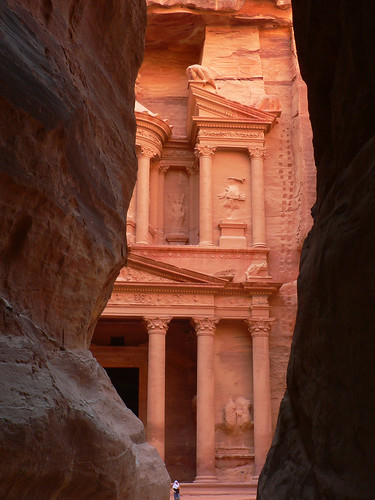
The Theatre:
Petra's theater carved into a stone valley is badly deteriorated by
floods of the centuries but still allows one to sit and imagine as you
sense the muted echoes of past civilizations. Our children, never
allowing a stage an intermission of quiet, performed renditions of
"Tomorrow" and "Jacob and Sons" or whatever musical we were into
at the moment, creating new echoes that no doubt caused empty
tombs to reverberate. The theater, built in the 1st century AD, seats 8500
and faces away from the sun presumably designed to keep the glare
out of equally sensitive Nabatean eyes.


"Al Deir" Monastery:
The largest carved structure in Petra, the monastery is perched
"High on a Mountaintop" and requires a walk up hundreds of steps
carved into the side of the mountain up to the top. I myself,
frequently stop to enjoy the incredible scenery below. Our babies
made the trek on donkey back - a testament to the sure-footing
of the noisy beast. Similar to the Treasury in design, it is believed to
have been a temple to the God Obadas. Glutons for more climbing,
the adventurous hike up the steep hill into which the building
is carved, to then pose on its urn capitol.

The Royal Tombs:
Most of the carved buildings extant in Petra today were tombs. Along
the mountain face across from the theater as one winds down the
main road of Petra, you will see the Royal tombs, lined up in
formation. Known as the Urn, Silk, Corinthian and Palace tombs,
none are as well preserved as the treasury but contain hollow empty
vaults, conducive to singing and kissing apparently. Rich's sister was
propositioned by a young Arab guide in one of the tombs and stills
talks about it to this day!
The High Place:
Well named, I have only climbed the 800 carved steps up to this
spot once, when I was 21. The site itself was a place for
worship and sacrifice and one can still see 2 stone altars as well as
an open plaza - worthy sites in and off themselves. But the view of
the Royal Tombs of Petra, Aaron's tomb across a valley on another
mountain and Wadi Musa are the rewards for your sacrifice in
effort to make it to the top.
Little Petra (Al Beidha):
Petra's little sister, is more of the same in a smaller, more intimate
setting. Delightfully easy to explore, after Petra, a staircase of carved
steps lead you to a secluded box canyon.


Overnight: Beyond Wadi Rum - Bedouin Camp & Dinner
https://www.beyondwadirum.com
https://www.beyondwadirum.com
You have to experience Wadi Rum by starlight and by morning glow -
this expansive desert of sandstone mountains and red sand dunes is a
fascinating landscape through which Lawrence of Arabia wandered.
Here we will collapse for a much needed night of rest and rose-colored
dreams, once your legs have stopped trembling from the exertions of
the day. Sleeping in a Bedouin tent, "luxurized" for the persnickety
tourist, - no "roughing it" involved - provided with comfy beds and
a delicious dinner of meats cooked in pots in the ground, salads and
shrak bread baked before your eyes. Lawrence would have been en-
vious of our modern take on the Wadi Rum adventure!

this expansive desert of sandstone mountains and red sand dunes is a
fascinating landscape through which Lawrence of Arabia wandered.
Here we will collapse for a much needed night of rest and rose-colored
dreams, once your legs have stopped trembling from the exertions of
the day. Sleeping in a Bedouin tent, "luxurized" for the persnickety
tourist, - no "roughing it" involved - provided with comfy beds and
a delicious dinner of meats cooked in pots in the ground, salads and
shrak bread baked before your eyes. Lawrence would have been en-
vious of our modern take on the Wadi Rum adventure!

DAY 4, Thursday, March 22:
Morning: Breakfast at Camp
Explore Wadi Rum
Back in our day, which was about 20 years ago now, we would occasionally drive to Wadi Rum and camp with our children. It was at that time well known from the movie "Lawrence of Arabia" which you might enjoy watching, but camping consisted of bringing everything we needed with us, which we did, including toilet paper and extra water. The late sun and early morning were exquisite on the vast red landscape, features weathered from the sandstone, and smoothed to make hiking to enthralling views, easy. But when it was dark, it was dark and I wondered what creatures buzzed and bumped about my head in the cool night breeze. Now days, organized tourist camps are nestled among the various outcroppings of stone and camels abound for riders - we suggest you ride your camel in Petra as they are cheaper and usually shorter rides. As our son-in-law states, "2 hours on a camel is 1 hour and 45 minutes too long."
Wadi Rum is where I first learned I didn't particularly like riding camels. After their first lurching stand from their knobby knees, you are up high and a captive - too high to jump - too cheap to give a tip to the owner to lower the camel back down! A note of caution - do not choose a camel with a ring in its nose. It is there for a reason - to pull on if the camel becomes too frisky. I was on such a camel and he liked to do something like a little skip as he walked. That was my first and last camel ride.
We prefer "wadi bashing" which is what the Americans called, piling in a 4-wheel drive and bumping about the desert floor. (Wadi is the word for valley). Our Rum experience will include loading into jeeps and doing a version of wadi bashing to some of the main sites in the wadi.

Afternoon: Aqaba and the Red Sea
We will leave Rum and drive about an hour south to the Gulf of Aqaba where the waters of the Red Sea border Asia: Saudi Arabia, Israel, Jordan and Africa: Egypt and you can see all four
countries from the beaches of Aqaba. If the 70 degree water doesn't bother you, you can stick your toe into the sea or swim in the hotel's pools as the historically minded among us explore the fortress of Aqaba. During WWII, the Ottoman forces were forced to withdraw from Aqaba and this fort in 1917 after the Battle of Aqaba, led by T.E. Lawrence and the Arab forces of Auda abu Tayi and Sheirf Nasir. The capture of Aqaba allowed the British to supply the Arab forces.
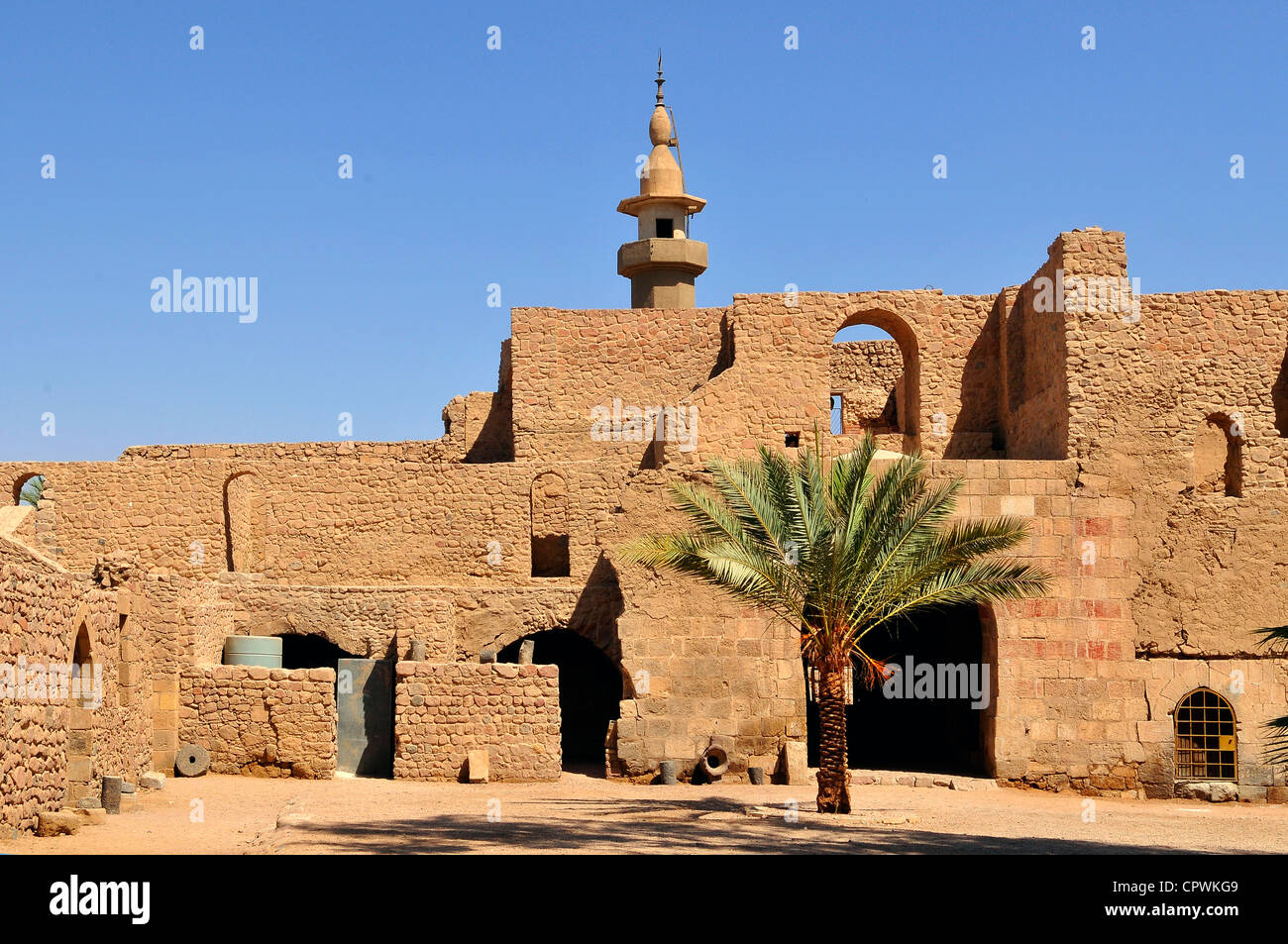
And today Aqaba is the only port in Jordan through which supplies flow to many countries of the Middle East.
A warm shower, a soft bed and quiet evening will prepare us for the wonders that await us in Masada and Jerusalem, all of which we will discover the next day.
Overnight at the Movenpick Hotel:
https://www.movenpick.com/en/middle-east/jordan/aqaba/resort-aqaba/overview/

Day 5, Friday, March 23rd:
Depart to arrive at Border Crossing by 9 am:
Morning: Cross over the River Jordan into Israel
Drive north through the Negev Desert
or as we sometimes call it, the "Lone
and dreary world."
Masada

WESTERN WALL:
Overnight: Jerusalem
St. Andrew's Scottish Guesthouse & Rafael Residence Boutique
(http://scotsguesthouse.com/) https://he.rafael-residence.com
Morning: Breakfast at Camp
Explore Wadi Rum
Back in our day, which was about 20 years ago now, we would occasionally drive to Wadi Rum and camp with our children. It was at that time well known from the movie "Lawrence of Arabia" which you might enjoy watching, but camping consisted of bringing everything we needed with us, which we did, including toilet paper and extra water. The late sun and early morning were exquisite on the vast red landscape, features weathered from the sandstone, and smoothed to make hiking to enthralling views, easy. But when it was dark, it was dark and I wondered what creatures buzzed and bumped about my head in the cool night breeze. Now days, organized tourist camps are nestled among the various outcroppings of stone and camels abound for riders - we suggest you ride your camel in Petra as they are cheaper and usually shorter rides. As our son-in-law states, "2 hours on a camel is 1 hour and 45 minutes too long."
Wadi Rum is where I first learned I didn't particularly like riding camels. After their first lurching stand from their knobby knees, you are up high and a captive - too high to jump - too cheap to give a tip to the owner to lower the camel back down! A note of caution - do not choose a camel with a ring in its nose. It is there for a reason - to pull on if the camel becomes too frisky. I was on such a camel and he liked to do something like a little skip as he walked. That was my first and last camel ride.
We prefer "wadi bashing" which is what the Americans called, piling in a 4-wheel drive and bumping about the desert floor. (Wadi is the word for valley). Our Rum experience will include loading into jeeps and doing a version of wadi bashing to some of the main sites in the wadi.

Afternoon: Aqaba and the Red Sea
We will leave Rum and drive about an hour south to the Gulf of Aqaba where the waters of the Red Sea border Asia: Saudi Arabia, Israel, Jordan and Africa: Egypt and you can see all four
countries from the beaches of Aqaba. If the 70 degree water doesn't bother you, you can stick your toe into the sea or swim in the hotel's pools as the historically minded among us explore the fortress of Aqaba. During WWII, the Ottoman forces were forced to withdraw from Aqaba and this fort in 1917 after the Battle of Aqaba, led by T.E. Lawrence and the Arab forces of Auda abu Tayi and Sheirf Nasir. The capture of Aqaba allowed the British to supply the Arab forces.

And today Aqaba is the only port in Jordan through which supplies flow to many countries of the Middle East.
A warm shower, a soft bed and quiet evening will prepare us for the wonders that await us in Masada and Jerusalem, all of which we will discover the next day.
Overnight at the Movenpick Hotel:
https://www.movenpick.com/en/middle-east/jordan/aqaba/resort-aqaba/overview/

Day 5, Friday, March 23rd:
Depart to arrive at Border Crossing by 9 am:
Morning: Cross over the River Jordan into Israel
Drive north through the Negev Desert
or as we sometimes call it, the "Lone
and dreary world."
Masada
Masada
The symbol to Israelis of an indomitable national will, Masada sits perched
on top of a flat-topped mountain where King Herod built one of his many palace
enclaves. Here we will ramble about ruins of palaces cisterns and storage vaults
which allowed Herod and his cortege to lull about in the dry desert air without
worry of thirst or hunger. But it was to a later habitation that Israelis look for
inspiration: that of the 960 Sicarii Rebels that fled Jerusalem and harassed the
Roman Empire from their defensive position.
This story is now considered more fiction than fact, but Masada creates a
dramatic backdrop for such a tale. Roman Legion X did in fact lay siege to
the community in 73 AD filling in an earthen ramp on which they could position
their siege weapons. The story goes that rather than submit to slavery, the
Jewish population committed mass suicide and destroyed their stores the night
before the Roman attach. Today you can ride a gondola to the top! By carefully
navigating you can also walk down the Roman ramp. This is where my mother
almost disowned me. Half way down what I assured her was the path down
we came to a ramp-block and had to turn around and walk back up. Mom was
never fond of dusty walks on hot days! Never navigate on 14 year-old memory.
From the top of Masada you can still see the remnants of the stone walls that
delineated the Roman encampments below. Young Jewish soldiers today go
to the mount to swear their oath of allegiance and affirm that "Masada shall
not fall again."

QUMRAN:
As we drive on up through the Wadi Araba, the lowest point on
earth, 1400 ft. below sea level, we arrive at the ruins of the
Essene community from the 2nd century after Christ.
The Dead Sea Scrolls were discovered here in the 1950's.
A bedouin shepherd boy, bored by his task of caring for his
docile flocks, throwing stones into a cave heard a hollow
plinking sound and went to investigate, where he discovered
large clay pots that held ancient scroll documents.

As we drive on up through the Wadi Araba, the lowest point on
earth, 1400 ft. below sea level, we arrive at the ruins of the
Essene community from the 2nd century after Christ.
The Dead Sea Scrolls were discovered here in the 1950's.
A bedouin shepherd boy, bored by his task of caring for his
docile flocks, throwing stones into a cave heard a hollow
plinking sound and went to investigate, where he discovered
large clay pots that held ancient scroll documents.

UP TO JERUSALEM:
And then we begin the twisting, winding drive up to Jerusalem from 1400 ft below sea level to 2474 ft. above (same elevation as Amman). Did you know that it is"Up' not because it is North, but "Up" because Jerusalem sits atop the hills of Judea, like a beautiful princess, her robes flowing about her valleys and terraces as Muslims, Jews, Ottomans, Crusaders, the armies of the centuries, battle at her feet to possess her (had to get a little poetic about Jerusalem - she has a magic all her own). As we ascend from below sea level we will pass the sign that says "Sea Level" where our children would take a big breath as though they had just popped their heads ups out of the sea, gasping for air.

And then we begin the twisting, winding drive up to Jerusalem from 1400 ft below sea level to 2474 ft. above (same elevation as Amman). Did you know that it is"Up' not because it is North, but "Up" because Jerusalem sits atop the hills of Judea, like a beautiful princess, her robes flowing about her valleys and terraces as Muslims, Jews, Ottomans, Crusaders, the armies of the centuries, battle at her feet to possess her (had to get a little poetic about Jerusalem - she has a magic all her own). As we ascend from below sea level we will pass the sign that says "Sea Level" where our children would take a big breath as though they had just popped their heads ups out of the sea, gasping for air.

WESTERN WALL:
One side of the retaining wall that surrounded Mount Moriah, and provided the support for the magnificent structures of Solomon'sand Herod's temples, holy to Jews as the last extant remnant of their days of glory. On Fridays at sundown, the beginning of the Jewish Sabbath (when we will be there) the faithful come to the wall to pray and leave tiny notes written to God in the cracks of the stones once quarried and carved by thecompatriots of the Solomnic era some 3000 years ago. The former name of the spot was "The Wailing Wall" as it was at these cold and merciless stones that Jews wailed for their lost city for centuries. During the '67 War, when Jews reclaimed the site, there was no longer cause for wailing; hence, the name change. (And the plants growing through the cracks of the wall, Western Wall Capers - a bit of trivia!)
Friday Prayers at Sundown (Shabbat)
As the observant and orthodox Jews rush - and we
mean rush - to the wall to offer their prayers at
sundown, marking the beginning of Shabbat
(sabbath), watch out for danger of trampling!
A variety of traditional costumes abound -
mushroom cap hats, kippa skull caps, side
curls, aprons and sashes and of course all
include the phylactery. (If you're not sure what
that is an explanation will follow at some point)
There is something of a celebratory mood at the
gathering of thousands. Last trip, Shauna
danced the Hora with a group of Israeli soldiers!
Overnight: Jerusalem
St. Andrew's Scottish Guesthouse & Rafael Residence Boutique
(http://scotsguesthouse.com/) https://he.rafael-residence.com
DAY 6, Saturday, March 24:
The Golden City -
Walk where the Savior walked
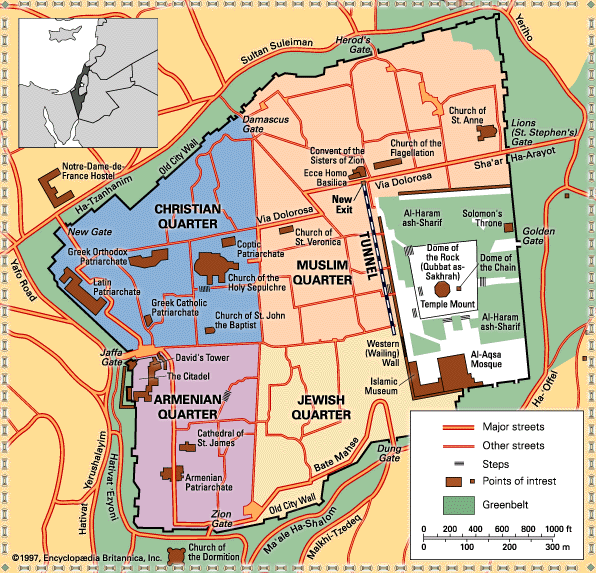
AM: Church at the BYU Center
Mt. of Olives Overlook, Orson Hyde Park, Gethsemane
PM: Gates of the City - St. Stephens
Via Delarosa Stops
Church of the Holy Sepulchre
Western Wall Tunnel - the Kotel
David's Tower - Night Spectacular
The Golden City -
Walk where the Savior walked

AM: Church at the BYU Center
Mt. of Olives Overlook, Orson Hyde Park, Gethsemane
PM: Gates of the City - St. Stephens
Via Delarosa Stops
Church of the Holy Sepulchre
Western Wall Tunnel - the Kotel
David's Tower - Night Spectacular
Old City of Jerusalem:
The Old city of Jerusalem is an area of only 1/3 of a square
mile,the borders of which grew and receded thru the battles,
migrations and destruction of the episodes of history. The
current delineation of the Old City is marked by the walls
constructed in 1538 at the command of Suleiman the Turkish
leader, with 11 gates (7 currently in use) which lead into
streets teeming with history. The stone paved roads and
limestone blocked buildings contain several sites revered
by Christianity and create and atmosphere appropriately
Biblical. The Old City of the Holy City id divided into 4
quarters - the Christian, Jewish, Armenian, Muslim and
never the 4 shall meet, the suspicious and embittered
populations staying fairly close to home in their own
quarters, but each is happy to sell to the passing tourist!
The Christina Quarter is our favorite for shopping but
in the Jewish Quarter more expensive but lovely items
including menorahs, gems and jewelry, phylacteries
woven items and candles are sold.
The BYU Jerusalem Center was built in 1988 in a remarkable setting on
Mt. Scopus, the hill adjacent to the Mt. of Olives that overlooks
Jerusalem. The center houses BYU students attending study abroad
program and is the meeting place of the Jerusalem branch of the
church. The western wall of the auditorium where church is held is a
curtain of windows which allows you to gaze at Golgotha, where Christ
was crucified, the Temple Mount where Solomon's temple stood and
the road to Damascus as you sit in the service - the perfect visual aid
to whatever is being taught!

The Jerusalem Overlook:
The most photographed panoramic view of Jerusalem is
offered at a plaza on the slopes of the Mt. of Olives. With
the Jewish cemetery sepulchres crammed and jumbled
like clumsy barnacles across its skirts, the Mt. of Olives
rises just east of the Holy City and provides an unparalleled
vista of the Temple Mount and the Herodian wall that
encompasses the Old City. The Eastern Gate (Golden
Gate) sealed since Suleiman's time in 1535 to delay the
2nd coming of the Savior (Suleiman the Magnificent,
Turkish Ottoman ruler), stands as a testament to man's
lack of understanding of the power of the Savior, who is
not intimidated by mortar sealed stones! The Kidron
Valley gouges a deep rift between the mount and the
city to define this sentinel of the eastern approaches. The
Garden of Gethsemane rests further below and a moque
marks the spot on the top of the mount from which Christ
ascended to visit his other sheep, after his resurrection.

Orson Hyde Memorial:
It was to this same popular mount that Joseph Smith sent Orson Hyde
in 1841 to dedicate the land to the return of the Jews. they haven't
stopped coming since and now claim Israel as their homeland and they
the rightful heirs. A memorial stone was placed and a garden created
by the Orson Hyde Foundation in 1979 though the park has suffered
at the hands over the years.
Russian Orthodox Church:
The Russian Orthodox Church, Church of the Magdalene,
built in 1886, is recognized from a distance by its beautiful
golden onion domes. Not far away, the Church of All Nations,
constructed in 1922 by the Roman Catholic Church, with
donations from "all nations", sits in the traditional Garden
of Gethsemane. The claim is made by some that the trees in the
courtyard are the very same that witnessed Christ's agony as he
prayed in the grove. Perhaps from the same roots, but though ancient,
not the same trees as the Romans razed the city to the ground during
their conquest in 77 AD (didn't every empire take their turn?) The
bedrock upon which Catholics believe Christ prayed during his agony
is exposed in the center of the church near remains of preserved
Byzantine mosaics.
Pools of Bethesda:
Site of public Roman baths in operation during Christ's
life, it was at this spot that Christ healed the lame man who
could not manage to crawl to the swirling waters to benefit
from their healing powers. The ruins are now studded with
bright crimson poppies. Several churches have sprouted on
the site in the centuries since, including St. Anne's, a small
stone chapel, elegant in its simplicity whose domes and
crevices provide rich resonance for those inclined to sing
Gregorian type chants - we'll teach you our favorite one!
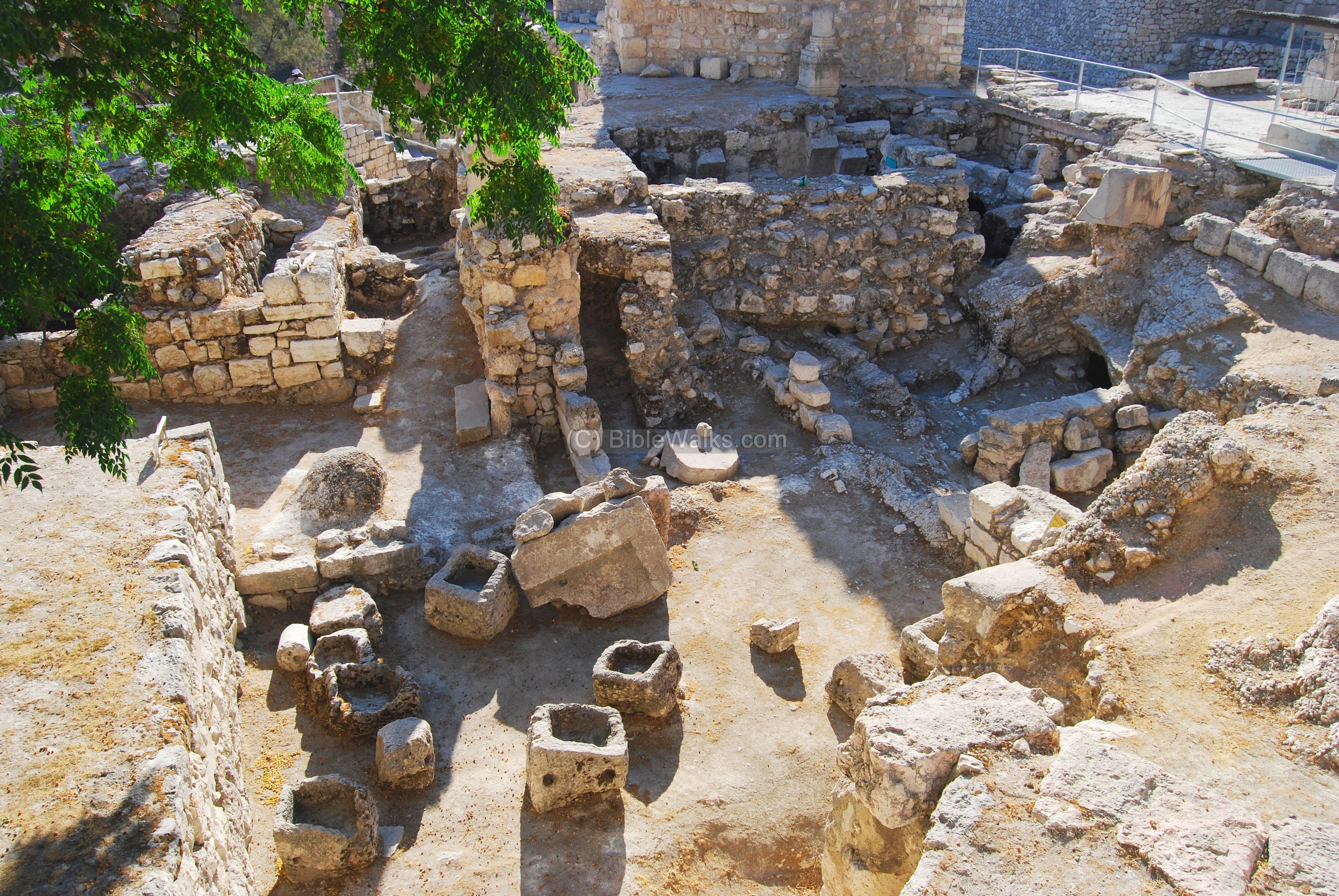
VIA DELAROSO OR WAY OF THE CROSS:
The current route dated to the 18th century makes it unlikely that this road
was the authentic path of some 2,000 feet which traced the route Jesus took on
his final mortal walk. Christ took up the cross at Station #1 and 13 stops later arrived
at Calvary. Groups of Catholic devotees follow that course every Friday, some with a
volunteer playing the Christ as he carries a cross leading th epilgrims, others dressed as
Roman soldiers. The processions stop at each of the 14 stations where Christ was
assumed to have stopped, such as Station #3, where he stumbled under the weight he
bore; Station #5, where Simon helped him carry his burden and Station #14 (inside
the Church of the Holy Sepulchre) where he was ultimately crucified. In many
Catholic churches today, as you look around the chapel, you will see representations
of each station in paintings, carvings or stained glass. There will be a quiz at the end
to see how may of the stations you can name!
Lunch: Christian Quarter Cafe
Many delicious discoveries await in the Old City as well,including bakeries with hot Arab breads (khoubz
and ka'ik), buttery cookies, (grayeb), baklawa & k'nafi,
street foods - felafel & shwarma, fresh juice and cafes
stuck in stone corners here and there. Here we will
munch and lunch!

Church of the Holy Sepulchre
This Catholic version of the setting of Christ's crucifixion and burial is at the end
of the "Way of the Cross" in the center of the Old City. The church sits in the courtyard
of this most sacred of Christian spots, which lured Crusaders from cooler Northern
climates to come and risk their lives to liberate it. You will note the ladder which
leans against the facade of the second story as it has done since 1854. It is suggested
that because of the friction between the different denominations that control the
church (Greek Orthodox, Roman Catholic, Armenian and Eastern Orthodox -
the Coptics have a small chapel in the back and the Ethiopians a space on
the roof) there was a dispute as to who should remove the ladder and so it remains
to this day. A result of the Crimean War, the keys to the church are kept and controlled
by a neutral 3rd party, two Muslim families, to avoid squabbling over the front
door in a complicated arrangement which exists between the interested Christian
sects. And that's only the outside of the building!

9 pm: Night Spectacular, Sound & Light Show
at David's Citadel, Jaffa Gate
https://www.tod.org.il/en/the-night-spectacular/
https://www.tod.org.il/en/the-night-spectacular/
Overnight: Jerusalem
St. Andrew's Scottish Guesthouse & Rafael Residence Boutique
(http://scotsguesthouse.com/) https://he.rafael-residence.com
Who can sleep! Your heads will be so full of all the
amazing things you have seen - visions of olive wood
will dance in your heads! But the church bells and
muezzin calls of Jerusalem will sing out early to wake
you to another glorious day in the Golden City!
will dance in your heads! But the church bells and
muezzin calls of Jerusalem will sing out early to wake
you to another glorious day in the Golden City!
DAY 7, Sunday, March 25:
More Holy City -
AM: Temple Mount & Dome of the Rock
Bethlehem
 Dome of the Rock
On the Temple Mount today, sits the beautiful gold-domed, "Dome of the Rock" built in the 600s by a Muslim Caliph. The much less impressive silver-domed Al-Aksa Mosque, hunkers on the southern end of the mount, but is the more revered of the two. In fact, the 3rd most significant spot in Islamic tradition: the spot from which Mohammed the prophet, ascended into heaven on a great white steed to view the glories of Allah. This hotly contested Temple Mount is the very bone of contention between the modern-day inhabitants of Israel; to Jews as the spot of their great temple, to Muslims as their 3rd holiest site and let's not forget the Christians for it was to this mount that Abraham came to offer his son Isaac as sacrifice to show the Lord unwavering obedience. David the King bought the land from a wheat thresher for the temple around 1000 B.C. - did he have any idea what a contested bit of earth it would become and the fortunes and lives that would be spent in its pursuit of it?
Dome of the Rock
On the Temple Mount today, sits the beautiful gold-domed, "Dome of the Rock" built in the 600s by a Muslim Caliph. The much less impressive silver-domed Al-Aksa Mosque, hunkers on the southern end of the mount, but is the more revered of the two. In fact, the 3rd most significant spot in Islamic tradition: the spot from which Mohammed the prophet, ascended into heaven on a great white steed to view the glories of Allah. This hotly contested Temple Mount is the very bone of contention between the modern-day inhabitants of Israel; to Jews as the spot of their great temple, to Muslims as their 3rd holiest site and let's not forget the Christians for it was to this mount that Abraham came to offer his son Isaac as sacrifice to show the Lord unwavering obedience. David the King bought the land from a wheat thresher for the temple around 1000 B.C. - did he have any idea what a contested bit of earth it would become and the fortunes and lives that would be spent in its pursuit of it?

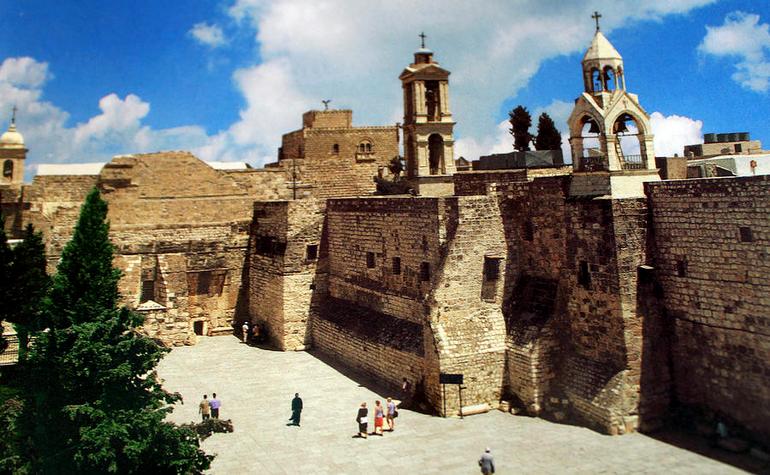

The Jewish Quarter:

Roman Roads:

Overnight: Jerusalem, Scottish Guesthouse


AM: Temple Mount & Dome of the Rock
Bethlehem
 Dome of the Rock
Dome of the Rock
Bethlehem
Haven't you wanted to see Bethlehem, since a wide-eyed child, enthralled by the beautiful Christmas story? The destination of the Wisemen, the compass of the star, the very spot on earth where Christ was born! I was first impressed with how close to Jerusalem it is - just a walk over a hill, a few minutes car ride - just 6 miles to the south! A favorite family memory involves going to thes shepherd's fields on the hills outside Bethlehem, on Christmas Eve with a picnic of felafel & hummous. Sheep and goats, now as then, ambled by, their bells tinkling, their modern-day shepherds wearing sneakers and jeans. In that idylic setting we sang every Christmas song we could think of with the word "Bethlehem" in it including, "O Little Town", "Angels We Have Heard on High" &"Far, Far Away on Judea's Plains" and
yet, when you are there it won't be far at all and you will have to pinch yourself to believe
it is so, because the bustling Arab town is nothing like the Christmas card pictures of the sleepy village of the city of David. And yet, upon entering the Church of the Nativity, you would imagine it must be so!

Church of the Navitity:
To bring home the point, that every knee must bow, you must stoop to enter the little
door of the church, which is another motley collection of construction projects by
door of the church, which is another motley collection of construction projects by
different sects during different building frenzies throughout history. St. Helena was the
first in 327 AD to initiate building a church over the site of the cave where she believed
Christ was born. It is today the oldest continuously used church in the world. Though
not glamorous, the stones smoothed by the passing feet of generations yet echo with
the tales of those pilgrims. And they are clean! We once visited the church a few
days after Christmas, our visit coinciding with the annual cleaning of the church
cleaning of the church by gasoline. Was it the fumes or the sacredness of the holy site,
that left us gasping for air?!
Olive Wood Factory:
Manger Square, the market area outside of the Church of
the Nativity, hosts several shops selling olive wood nativities,
bibles, spice containers, rosary beads, crosses, statues, etc.
our favorite being the shop that owns the workshop down the
road from the square, which lets you observe craftsmen
carving and finishing the wood.
PM: The Palm Sunday Processional
Jewish Quarter & Roman Roads
Palm Sunday Processional:
Palm Sunday is celebrated by Catholics with a colorful procession of pilgrims carrying palm fronds and singing from the church in the small village of Bethpage on the Mount of Olives to Saint Ann's Church on the Via Dolorosa, in the courtyard of the Pools of Bethesda. We can observe or join in as you prefer as the procession descends the narrow road down the Mt. of Olives, passing Gethsemane, crossing over the Kidron Valley and up again through St. Stephan's Gate into the Old City of Jerusalem; roughly the same route Christ would have taken as he traveled into Jerusalem from Bethany and the home of Martha and Mary, each day during his last week of life. The procession stops at St. Ann's church, the first station of the cross to sing and recite prayers.

The Jewish Quarter:
The quarter is inhabited by around 2,000 residents and is home to numerous yeshivas and synagogues. In CE 135, when the Roman Emperor Hadrian built the city of Aelia Capitolina on the ruins of ancient Jerusalem, the Tenth Legion set up their camp on the land that is now the Jewish Quarter.[3] New structures, such as a Roman bathhouse, were built over the Jewish ruins.[The Jewish Quarter changed hands throughout the centuries until finally coming under Jordanian rule in 1948, until the Six-Day War in June 1967 when Israel occupied it. During the first week after taking the Old City, 25 dwellings constituting the largest part of the Mughrabi Quarter were razed to create a plaza at the foot of the Western Wall. Beginning in the years immediately after 1967, around 6,000 Arabs were evicted from the Jewish Quarter, and the start of exclusion of Palestinians from appropriated land by the private company in charge of its development, for the reason that they were not Jewish. This later became legal precedent in 1978 when the Supreme Court made a decision in the case of Mohammed Burqan, in which the Court ruled that, while Burqan did own his home, he could not return because the area had "special historical significance" to the Jewish people.

Roman Roads:
The Roman main north-south thoroughfare, the Cardo Maximus, was originally a paved avenue approximately 22.5 meters wide (roughly the width of a six lane highway) which ran southward from the site of the Damascus gate, terminating at an unknown point. The Cardo’s most striking visual feature was its colonnade. The line of the Cardo Maximus is still visible on the Jewish Quarter Street, though the original pavement lies several meters below the modern street level. In the 7th century, when Jerusalem fell under Muslim rule, the Cardo became an Arab-style marketplace. Remains of the Byzantine Cardo were found in the Jewish Quarter excavations beginning in 1969.[10]
In 1971, a plan for preserving the ancient street was suggested which relied heavily on the sixth century Madaba map, a mosaic map of Jerusalem found in 1897 in Madaba, Jordan. The map clearly showed the Roman Cardo as the main artery through the Old City.

Having trouble sleeping again? Little wonder. Either that
or you will sleep as though you yourself are awaiting the
resurrection. If you are among the insomniacs a game of
scrabble or a quick run out for felafel, prowling the Arab
quarter by night, will fill in the sleepless hours!
Day #8: Monday, March 26th
"Down from Jerusalem"
AM: Garden Tomb
Shopping in Jerusalem
Israeli Museum & Shrine of the Book
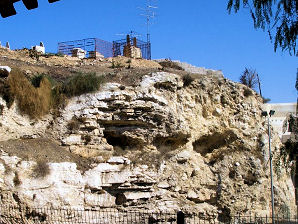
or you will sleep as though you yourself are awaiting the
resurrection. If you are among the insomniacs a game of
scrabble or a quick run out for felafel, prowling the Arab
quarter by night, will fill in the sleepless hours!
Day #8: Monday, March 26th
"Down from Jerusalem"
AM: Garden Tomb
Shopping in Jerusalem
Israeli Museum & Shrine of the Book

Golgotha:
St. Helena, the mother of the Christian convert,
Constantine, ruler of the Roman Empire (300 AD) made a
pilgrimage to the Holyland in 326 and to her inspiration and
visitations is credited the location of several of the
Christian holy sites, but whose accuracy has been
questioned by historians and archaeologists ever since.
But who's quibbling - a site by any other name would be as
scenic!
And so the Catholic version of Golgotha (or Calvary) is
housed within a Catholic Church - find the spot, build a
church and fill it with relics- the traditional way to pay
homage. Not even the church building went uncontested
and is now controlled by 4 separate Christian
denominations who lay claim to four specific areas of the
church. It is on this mount that Catholic tradition
suggests Christ was crucified and then buried - and it is
fittingly enshrined in old stone, festooned with candles,
gilded stars and incense perfumes the air. My favorite
touch are the thousands of tiny crosses carved in the walls
by crusaders throughout the centuries: the medieval
The Garden Tomb:
Now, a bit more humble and subdued is a protestant version
of a tomb, near a hill studded with more recent Muslim
tombstones, below which rumbles the Arab bus station of
East Jerusalem. Some say the face of this craggy mountain
resembles the face of a skull: the term "Golgotha" meaning
place of the skull. Discovered in the late 1800s, this humble
tomb carved into the hill, adjacent to Golgotha, complete
with a trough for rolling a stone to cover its mouth, is
accepted by some of the Christian world as the actual tomb
where Christ was buried. The hill is indeed on the road to
Damascus and outside the city wall, as designated and the
lovely, quiet garden is much easier for some to appreciate
as the appropriate setting. In this small quiet tomb our
children and I sang, "When Jesus Wept" a lovely hymn
that recalls most sacred events that certainly transpired
somewhere nearby. We will enjoy the ambiance and pick
a sprig of rosemary on our way out.
Shopping in the Old City:
Shoppers, tie up your shoes, keep wallets handy and hone
up your bartering skills for a serious shopping morning! And
what do the merchants of Jerusalem peddle? A caravan of
tempting souvenirs - yours for the bartering! Favorites include
Palestinian pottery - plates, cups, bowls and knick-knacks
painted in vibrant blues and whites, leather sandals, jackets,
slippers, painted tiles, Roman glass set in jewelry, gold and
silver jewelry, oil lamps, ancient coins, spices, woven bags,
olive wood nativities, bibles, sheepskin coats, candles, t-shirts..
Our favorite shop belongs to Shabaan on Christian Quarter
Road, who can spot a Mormon a block away,
having catered for years to the BYU Jerusalem Center
population. He was always our longest stop in the Christian
Quarter as he would insist we sit and visit, offering typical
Arab hospitality in the form of fresh orange juice and kibbe -
a Palestinian meatball, the best being made by an old man in
Jerusalem. Shabaan would send a courier to fetch them for us
until the old man died, taking the wonderful recipe with him to
The Israel Museum
is host to the finest biblical and
Jewish antiquities collections in the world. Its star exhibit is that
of the Dead Sea Scrolls housed underneath a roof shaped like
the lid of the clay jars in which they were found. The Jerusalem
Model of the 2nd Temple Period, was great fun for our children
to walk through, the waist high structures making them feel
Goliath-like! Other exhibits include a reconstructed Jewish
Synagogue from eastern Europe during the diaspora and
fascinating scrolls and records of religious significance.

PM: Jaffa, Caesarea, Picnic at Aquaduct Beach
Jaffa is located on the Mediterranean coast, just north
of Tel Aviv.
-This is the site of the Biblical Joppa, the town to which
Jonah fled to escape the errand of the Lord at which folly
he was swallowed by the whale.
-Jaffa today has been restored to lovely stone streets
winding among polished limestone shops and charming
restaurants, (including a favorite French restuarant
which would undoubtedly serve whale sauteed in butter,
if they could!)
-The hill where Jaffa sits provides a beautiful panoramic
view of Tel Aviv and the Mediterranean.
Caesarea:
The town was built by Herod the Great about 25–13 BCE as the port city Caesarea Maritima. It served as an administrative center of
Judaea Province of the Roman Empire, and later
the capital of the Byzantine Palaestina Prima province during the classic period. Following the Muslim conquest in the 7th century, in which it was
the last city to fall to the Arabs, the city had an Arab majority until
the Crusader conquest.
This is the city to which Paul the apostle, was taken and kept under
arrest for two years.
The Roman Aquaduct at Caesarea
Overnight at Nazareth:
Al Mutran Guest House: http://www.al-mutran.com/
Villa Nazareth: http://villa-nazareth.co.il/
Day #9 - Tuesday, March 27:
...In His own country...
AM: Nazareth, Boat ride on Sea of Galilee,
Capernaum

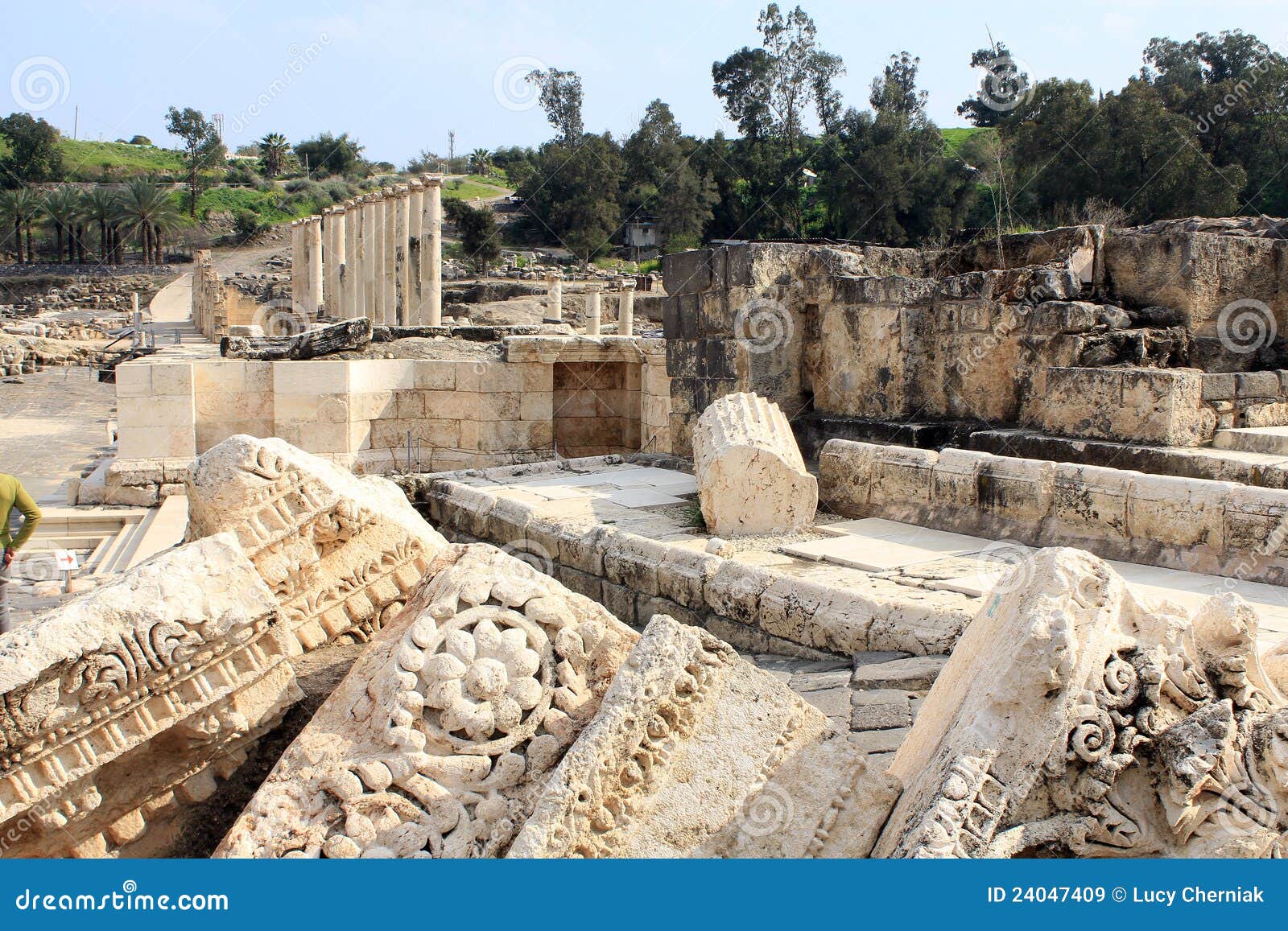
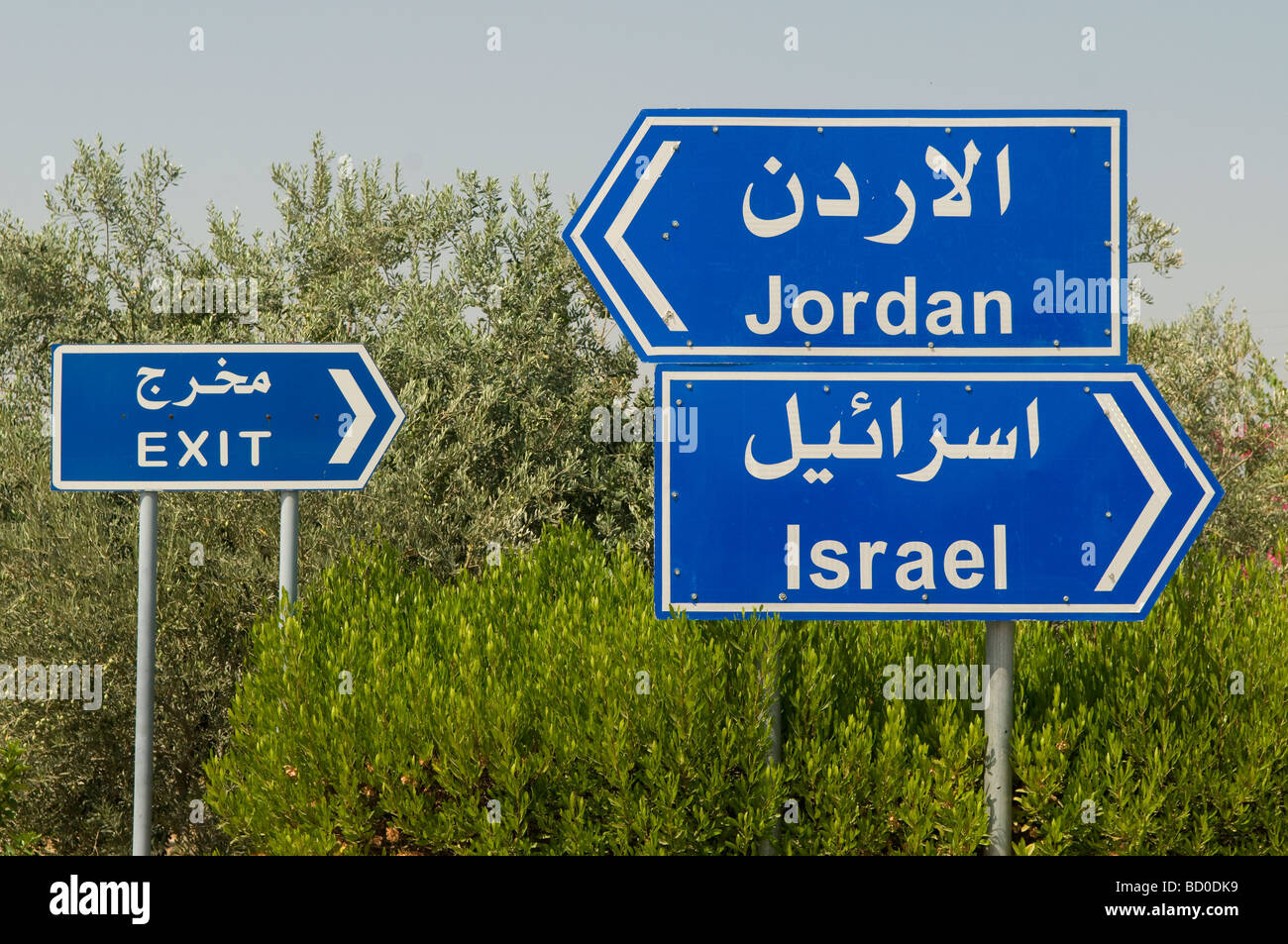
Day #9 - Tuesday, March 27:
...In His own country...
AM: Nazareth, Boat ride on Sea of Galilee,
Capernaum
Nazareth:
We will all be Nazarenes for a day - how proudly we accept that
honor now, to be labeled as He was, to walk in His footsteps, to
climb the steep hills and eat the same kind of flat loaved breads
He did. To sleep for a night in the hometown of The Nazarene!
And the places we will stay, right in the heart of the older part
of the town, allow us to walk the alleyways, wander in the souk,
wander out early in the morning looking for fresh ka'ik (donut-shaped
sesame seeded bread. A must see is The Church of the Annunciation,
built over what is believed to be the spot of Mary's childhood home
and where the angel Gabriel visited her. Built in 1969, over centuries-
worth of previous churches, an outstanding feature are the mosaics
of Christ and Mary created by various countries around the world.
"Mary's Well" not far from our hotels also contends
for the honor of being the site of the Annunciation.
There is a wonderful spice market in the
town we might visit if time allows. But we must make time for the
small Synagogue claimed to have been the one in use during the Roman
period and it is one in which you can imagine Christ standing and
reading the prophetic scriptures and boldly proclaiming that they
spoke of Himself. Its location is odd, in the middle of the market
across from tinkling head scarves and woven handbags, but the
suggestion of authenticity is intriguing.

Boat Ride on the Sea of Galilee
Capernaum:
Now in ruins just as was prophesied by the Savior
in Matt. 11:23, they are yet wonderful ruins of a
small fishing village on the northern shore of the
Sea of Galilee. This was the home of Peter, James
& John and perhaps that is why Christ spent time
there performing several healings, including the
servant of the Roman Centurion and the paralytic
lowered through the roof to where the Savior was.
A carving in stone of the ark of the covenant provides
an ancient visual aid to what it may have looked like.
Peter's house is interesting and and my favorite, the
ruins of a synagogue that some believe date back to
the time of Christ. Standing on its gleaming white
stones (most of the buildings were composed of black
basalt) one can imagine the Savior speaking to the
congregation about the lack of respect
prophets receive in their own countries.
PM: Beit Shean, Cross over Jordan at
Sheik Hussein Bridge

Beit Shean:
Roamin' with the Romans!
Beit She'an's location has always been strategically significant, due to its position at the junction of the Jordan River Valley and the Jezreel Valley, essentially controlling access from Jordan and the inland to the coast, as well as from Jerusalem and Jericho to the Galilee. Archaeological studies suggest that settlement began in the Late Neolithic or Early Chalcolithic periods (sixth to fifth millennia BCE.)[3] Occupation continued intermittently up to the late Early Bronze Age I (3200–3000), according to pottery finds, and then resumes in the Early Bronze Age III.[4] A large cemetery on the northern Mound was in use from the Bronze Age to Byzantinetimes.[5] Canaanite graves dating from 2000 to 1600 BCE were discovered there in 1926. Then followed the waves of the various cultures and influences of
the Egyptians, Greek, Romans, Byzantine, Arab caliphates, Crusaders, Mamluks, Ottoman, and the British
The Roman era ruins we see today are remnants of the city of 63 BCE, when Pompey made Judea a part of the Roman empire. Beit She'an was refounded and rebuilt by Gabinius.[24] The town center shifted from the summit of the Mound (the "Tel") to its slopes. Scythopolis prospered and became the leading city of the Decapolis, a loose confederation of ten cities which were centers of Greco-Roman culture, an event so significant that the town based its calendar on that year.
The city flourished under the "Pax Romana", as evidenced by high-level urban planning and extensive construction, including the best preserved Roman theatre of ancient Samaria, as well as a hippodrome, a cardo and other trademarks of the Roman influence.
Cross over from Israel to Jordan via the Northern Crossing: Sheik Hussein Bridge/Jordan River

Overnight at As Salt, Jordan:
Saltus Hotel:
Beit Aziz Boutique Hotel:
https://www.booking.com/hotel/jo/bait-aziz.html?label=gen173nr-1FCAEoggJCAlhYSDNYBHIFdXNfdmGIAQGYATHCAQp3aW5kb3dzIDEwyAEM2AEB6AEBAECkgIBeagCAw;sid=165e99c0a5c69945f6748915d5074449;dest_id=-970545;dest_type=city;dist=0;group_adults=2;hapos=2;hpos=2;room1=A%2CA;sb_price_type=total;srepoch=1520568473;srfid=a3085d34b3da64a5334dc5b29e269e6392ebedb2X2;srpvid=27451d0c3620000c;type=total;ucfs=1&#hotelTmpl
Day 10: March 28th:
......Dead...Fed...Bed
AM: Ajloun Fortress, Jordan

Day 10: March 28th:
......Dead...Fed...Bed
AM: Ajloun Fortress, Jordan

Ajloun Castle:
Set "high on a hill with a lonely goat-herd" - (actually a possibility), Ajloun castle/fortress dominates hills of cypress and pomegranate trees dotted with white block limestone houses. When we visited we would spread our picnic mat out under an olive tree and eat as the peskier of the children pelted green olives at one another. One of our favorite ruins to visit, the drive there was on twisting back roads and through tiny villages or nestlings of houses. On one occasion it was the end of Ramadan - Eid el Fitr - and little girls waved to us in their frilly new dresses as we drove by. Built on the site of an old monastery in the 1100's this is a Muslim fortress (anti-crusaders) situated in Northwest Jordan. From its high ground the castle guarded 3 wadis which descend towards the Jordan Valley. It was renovated as a fort in 1184 by Izz al-Din Usama, a general in the army of Saladin (the chief anti-crusader) and controlled traffic along the road connecting Dasmacus and Egypt. Once you stand out in the open courtyards you will better understand why it was built in this strategic location as you can see the valleys and hills as far as your eyes allow you to see!

PM: Dead Sea
Looking for seashells, coral life, a pleasant dive to the
sandy bottom or even for ruins of the destroyed cities of Sodom
& Gomorrah? You may find a pillar of salt but that is as close as
you'll come to any treasures lying at the bottom of the sea - not
because they aren't there, but because you won't be able to get
yourself underwater to see! Floating on the Dead Sea is a unique
experience (unless you grew up near the shores of the Great Salt
Lake). You'll feel something like an inflatable child's toy bobbing
on the water. Once you get your bearings to this sort of weightless
sensation you will have great fun. And the intense mineral
composition of the waters work wonders on your skin, especially
if you opt for the mud treatment, or just scoop up handfuls yourself
and rub it on. Either way, once rinsed and dried, you will feel
rejuvenated! The marvelous spa and swimming pools perched
looking out over the Dead Sea are a rare treat in luxury as well.
I once returned from a day at the Dead Sea unable to move for the
rest of the evening, I was so relaxed, drugged with its healing
properties!


Dinner at the Terrazo Restaurant:
http://www.marriott.com/hotelwebsites/us/q/qmdjv/qmdjv_pdfs/IL_
Terrazzo_Vintage_Menu_web.pdf
Overnight: Dead Sea Marriott Hotel & Spa
http://www.marriott.com/hotels/travel/qmdjv-dead-sea-marriott-resort-and-spa/
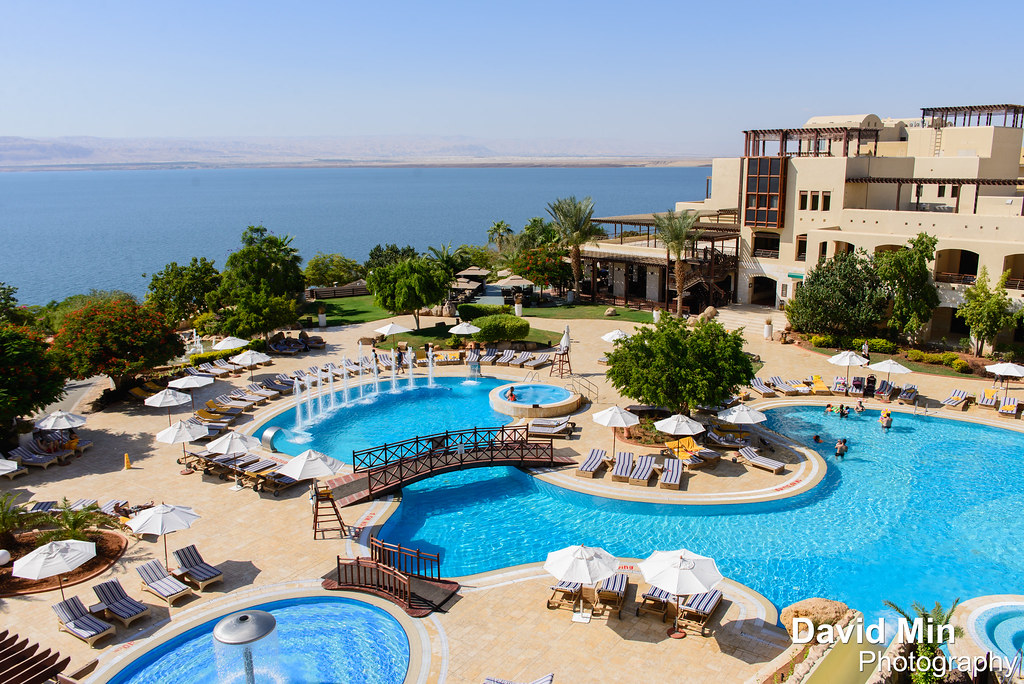
Day #11: Thursday, March 29th:
....beyond Jordan....
AM: More Dead Sea
PM: Amman Citadel, Museum, Theater
Philadelphia (Amman) Citadel:
The center of the ancient Rabbat Ammon, the citadel
crowns the city of Amman with pillars reaching up to a
remarkably blue sky to support roofs which have long since
crumbled; remnants of the royal palace of the Umayyad period.
But they were just the most recent buildings in a succession of
houses, shops and palaces that housed the generations of
inhabitants beginning in about 7,000 B.C.! Other notable ruins
include those of a Roman temple to Hercules built in 175 AD.
Remember the story of David sending Bathsheba’s husband to
the frontlines to die in battle? Somewhere near here he met his
doom. There was a grazing donkey in our Amman neighbor-
hood we named Uriah in his memory.
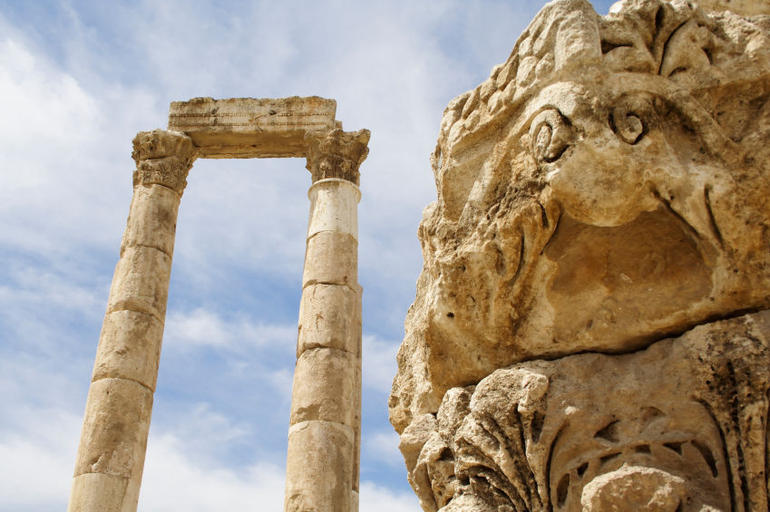
The Jordan Museum:
This newly built and rather impressive facility houses the one and
only copper Dead Sea Scroll but owned most all of the Dead Sea
Scrolls until the loss of their East Jerusalem branch of the museum
in the ‘67 War to Israel. While constructing new roads in 1983,
Ain Ghazal, a Neolithic community was discovered near Amman.
The museum touts statues of the same name as their most
important acquisition. Considered the oldest anthropomorphic
statues (human images) made by human hands (circa 7000 B.C.)
32 of the statues were found in ceremonial pits. Lime plaster
molded over cores of bundled twigs, the statues were painted with
clothes and hair with life-like eyes made of cowrie shells.
Roman Theater:
One of 5 you will see during our trip, the Roman theater in
downtown Amman seats 6,000 and is better preserved than
Petra’s but not as large as Bet Shean’s but is still used today for
concerts &programs. It is built into a mountainside in a similar
fashion to Petra’s but of limestone rather than sandstone – a
more durable substance. Two small museums have been built
on the site which contain traditional costumes and cultural items.

Depart for US from Queen Alia International Airport
Ma'Salaama













No comments:
Post a Comment